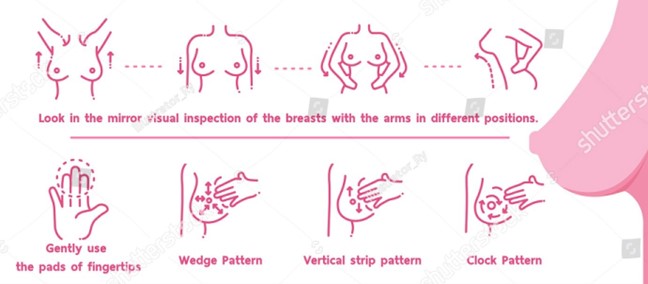Which of the following statements concerning breast examination is true?
The examiner uses bimanual palpitation to evaluate the tail of spence.
The axillae are not palpitated if the breast tissue is normal.
Nipple discharge in pregnant women is considered abnormal.
The breasts are inspected as the client changes positions to detect abnormal symmetry.
The Correct Answer is A
A. The examiner uses bimanual palpitation to evaluate the tail of spence.
This statement is true. The tail of Spence is the extension of breast tissue into the axilla, and it is important to evaluate this area during a breast examination. Bimanual palpation, which involves using both hands to examine the breast tissue, is commonly used to assess the tail of Spence.
B. The axillae are not palpated if the breast tissue is normal.
This statement is false. The axillae should be palpated during a breast examination, even if the breast tissue is normal. Lymph nodes in the axilla can sometimes be the first site of metastasis for breast cancer, so it is important to check for any abnormalities in this area.
C. Nipple discharge in pregnant women is considered abnormal.
This statement is false. Nipple discharge is a common occurrence during pregnancy and is usually considered normal, especially in the later stages of pregnancy. However, any sudden or persistent discharge should be evaluated by a healthcare provider.
D. The breasts are inspected as the client changes positions to detect abnormal symmetry.
This statement is false. The breasts should be inspected in a consistent position, such as with the patient sitting or lying down. Changing positions can alter the appearance of the breasts and make it difficult to detect any changes or abnormalities. However, it is important to inspect both breasts and compare them for any signs of asymmetry or abnormalities.
Nursing Test Bank
Naxlex Comprehensive Predictor Exams
Related Questions
Correct Answer is A
Explanation
A. The examiner uses bimanual palpitation to evaluate the tail of spence.
This statement is true. The tail of Spence is the extension of breast tissue into the axilla, and it is important to evaluate this area during a breast examination. Bimanual palpation, which involves using both hands to examine the breast tissue, is commonly used to assess the tail of Spence.
B. The axillae are not palpated if the breast tissue is normal.
This statement is false. The axillae should be palpated during a breast examination, even if the breast tissue is normal. Lymph nodes in the axilla can sometimes be the first site of metastasis for breast cancer, so it is important to check for any abnormalities in this area.
C. Nipple discharge in pregnant women is considered abnormal.
This statement is false. Nipple discharge is a common occurrence during pregnancy and is usually considered normal, especially in the later stages of pregnancy. However, any sudden or persistent discharge should be evaluated by a healthcare provider.
D. The breasts are inspected as the client changes positions to detect abnormal symmetry.
This statement is false. The breasts should be inspected in a consistent position, such as with the patient sitting or lying down. Changing positions can alter the appearance of the breasts and make it difficult to detect any changes or abnormalities. However, it is important to inspect both breasts and compare them for any signs of asymmetry or abnormalities.
Correct Answer is ["A","B","C"]
Explanation
The nurses would teach the patient to palpate all four quadrants of the breast, including the upper outer quadrant, lower inner quadrant, and upper inner quadrant, as well as the tail of Spence, which is the extension of breast tissue into the axilla (armpit). It's important for the patient to be familiar with their own breast tissue and report any changes or abnormalities to their healthcare provider.

Whether you are a student looking to ace your exams or a practicing nurse seeking to enhance your expertise , our nursing education contents will empower you with the confidence and competence to make a difference in the lives of patients and become a respected leader in the healthcare field.
Visit Naxlex, invest in your future and unlock endless possibilities with our unparalleled nursing education contents today
Report Wrong Answer on the Current Question
Do you disagree with the answer? If yes, what is your expected answer? Explain.
Kindly be descriptive with the issue you are facing.
